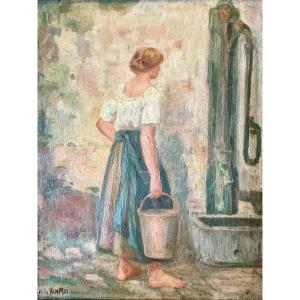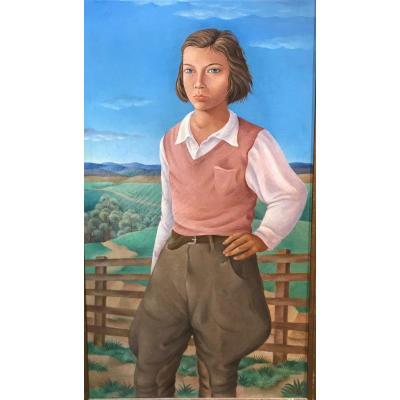Van Dyck set a new standard for English portraiture and his portraits gave his royal and aristocratic sitters an unprecedented glamour and elegance and many artists replicated his work. His impact on the art world was immense and as such his portraits were regularly copied - even by major artists. Our portrait is an example of this practice and a fine work of art in itself.
Dorothy Spencer (née Sidney), Countess of Sunderland (c.1617-1684) was known for her beautify, wit, charm, and intelligence. She was the wife of Henry Spencer, 1st Earl of Sunderland and 3rd Baron Spencer, and the daughter of Robert Sidney, 2nd Earl of Leicester. She was an ancestor of the late Lady Diana, Princess of Wales.
The couple went to live in France with Dorothy's parents, where her father was ambassador. Later they returned to England in 1641 but her husband was killed at the First Battle of Newbury shortly thereafter, aged 23 (by a cannonball), leaving Dorothy with two children, and pregnant with a third.
Dorothy took over the running of Althorp and ensured its protection from both warring parties. She managed to see that no devastation overtook Althorp, aided by her husband's uncle, Sir Edward Spencer. Dorothy was responsible for the dramatic transformation in Althorp, from Tudor to Stuart style. Dorothy was persuaded to remarry again by her father and in 1652 she married Robert Smythe, of Roundes, in the parish of Bidborough, Kent. Smythe was from the family of Viscounts Stangford, of Ireland. The couple had one child: Robert who became governor of Dover Castle during the reign of Charles II.
Van Dyck was born in Antwerp and was the most important Flemish painter of the 17th century after Rubens, to whom he was an assistant to. Van Dyck first visited England from 1620 to 1621, when he painted a handful of works. From late 1621 to late 1627, he was in Italy, where he studied the techniques and compositions of old masters before working for the British king Charles I. He is now best remembered for his portraits of courtly figures and his uncanny ability to portray the heart and soul of his sitters and his authoritative and flattering representations.
Provenance: UK private collection
Measurements: Height 92cm, Width 80cm framed (Height 36”, Width 31.5” framed)

























 Le Magazine de PROANTIC
Le Magazine de PROANTIC TRÉSORS Magazine
TRÉSORS Magazine Rivista Artiquariato
Rivista Artiquariato
